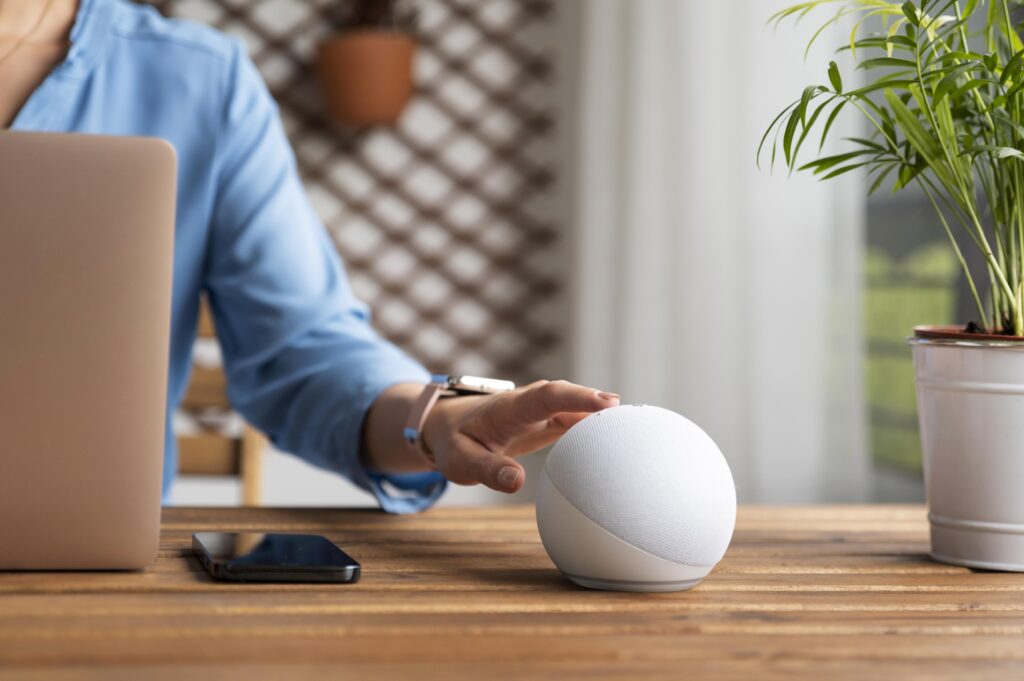Introduction
Building a budget-friendly smart home doesn’t mean compromising on convenience or functionality. With the availability of affordable smart devices, transforming your living space into a smart home has never been easier. Whether you’re looking to automate your lighting, secure your home, or reduce energy costs, there are plenty of options that won’t break the bank. In this guide, we’ll explore cost-effective smart home devices and provide tips on how to maximize your budget while enjoying the benefits of a fully connected home
Top Affordable Devices for a Budget-Friendly Smart Home

Creating a budget-friendly smart home is easier than ever, thanks to a wide range of affordable smart devices.By beginning with basics like smart lighting systems, smart plugs, and voice assistants, you can steadily automate your home while keeping costs manageable. For instance, smart plugs like the TP-Link Kasa and Wyze Bulbs offer convenient automation of lights and appliances, often priced under $20. These devices allow you to control your home’s functionality via smartphone apps or voice commands, providing significant convenience while keeping costs low. Additionally, budget-friendly devices like the Echo Dot or Google Nest Mini serve as excellent smart hubs, helping you manage multiple devices effortlessly.
Why Create a Smart Home?
A smart home provides a wide range of advantages that extend far beyond just convenience, enhancing security, energy efficiency, and overall comfort. Here’s why investing in budget-friendly smart technology is a great idea:
- Convenience: Automating everyday tasks like controlling lights, locks, and thermostats can simplify your life. You can manage your home through your smartphone or voice commands, often without lifting a finger.
- Security: Smart security devices like cameras, locks, and sensors provide real-time monitoring, helping you feel safe whether you’re at home or away.
- Energy Efficiency: Smart thermostats, plugs, and lighting systems allow you to use energy more efficiently, saving you money on utility bills.
- Customizable Comfort: With the ability to set preferences, smart devices can make your home more comfortable, such as adjusting lighting or temperature based on your routine.
With the advantages clear, let’s explore how you can create a smart home without breaking the bank.
1. Start with a Smart Hub or Voice Assistant
A smart hub or voice assistant serves as the central control system for your smart home, connecting and managing all your devices seamlessly. It acts as the central control point for all your smart devices, allowing you to manage everything from one app or using voice commands. The best part? You don’t need an expensive hub to get started.
- Amazon Echo Dot: The Amazon Echo Dot stands out as a highly popular and budget-friendly choice for a voice assistant, offering robust smart home control at an affordable price. At around $50 or less (often on sale for $30), it’s a great way to start your smart home journey on a budget.
- Google Nest Mini: Similar to the Echo Dot, the Google Nest Mini offers excellent functionality at an affordable price (also around $50 or less). It integrates with Google Assistant, letting you control your devices, ask questions, play music, and manage your home through the Google Home app.
2. Invest in Smart Lighting
Smart lighting is one of the simplest and most affordable entry points for home automation, offering convenience and efficiency without a hefty price tag.
- Wyze Bulb: At around $8-$10 per bulb, Wyze offers a very affordable solution to smart lighting. dim the lights, and create automation scenarios without needing a hub.
- TP-Link Kasa Smart Bulbs: Kasa smart bulbs are also inexpensive, usually priced between $12 and $15. These bulbs offer similar features to Wyze, such as remote control and scheduling, but they also come with energy monitoring features, allowing you to track electricity usage directly from the app.
3. Add Smart Plugs to Control Appliances
Smart plugs are an excellent and cost-effective way to make ordinary appliances smart.
- Amazon Smart Plug: Priced at around $25, the Amazon Smart Plug is easy to set up and integrates seamlessly with Alexa, allowing you to control plugged-in devices with your voice or the Alexa app.
- TP-Link Kasa Smart Wi-Fi Plug: Kasa smart plugs are more budget-friendly, typically priced between $12 and $15. They work with both Alexa and Google Assistant and can be controlled via the Kasa app, making them perfect for automating small appliances.
4. Upgrade Your Security with Budget Smart Cameras
Home security systems don’t have to be expensive. With affordable smart cameras, you can keep an eye on your home whether you’re there or not. Many budget-friendly cameras offer features like two-way audio, motion detection, and cloud storage for recorded footage.
- Wyze Cam v3:Priced at approximately $35, the Wyze Cam v3 stands out as one of the top budget-friendly smart cameras available, offering excellent value. It offers 1080p HD video, night vision, two-way audio, and free 14-day cloud storage. The camera’s weatherproof design ensures it’s versatile and reliable for both indoor and outdoor use, no matter the conditions.
5. Install a Budget Smart Thermostat
Smart thermostats help optimize your home’s temperature settings, reducing energy waste and saving money on utility bills.
- Wyze Thermostat: At around $70, the Wyze Thermostat is an affordable alternative to more expensive models. It allows you to control the temperature from your phone or via voice assistants, set schedules, and track energy usage. This smart thermostat is an excellent entry-level option for homeowners seeking an affordable and efficient way to control their home’s temperature.
- Emerson Sensi Wi-Fi Thermostat: Priced at around $130, the Emerson Sensi is slightly more expensive but offers excellent features, including geofencing, flexible scheduling, and energy usage reports. It works with Alexa, Google Assistant, and Apple HomeKit, making it a versatile choice for smart home automation.
A smart thermostat is one of the best investments you can make for long-term energy savings, and these budget options make it easier to automate your heating and cooling without overspending.
Conclusion
Building a smart home on a budget is entirely achievable and offers a cost-effective, rewarding way to upgrade your living space with modern technology. By starting with affordable smart hubs, lighting, plugs, and security devices, you can gradually build a system that brings automation, energy savings, and peace of mind. Focus on prioritizing devices that meet your needs, and take advantage of sales and discounts to maximize value. With a little planning, you can enjoy the benefits of a smart home without stretching your budget.














